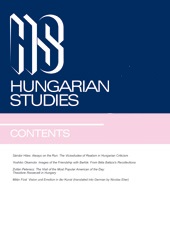Catholic identity in Hungary — The Mindszenty case
Catholic identity in Hungary — The Mindszenty case
Author(s): Árpád V. KlimóSubject(s): Christian Theology and Religion, Post-War period (1950 - 1989), Sociology of Religion, History of Religion, Politics and Identity
Published by: Akadémiai Kiadó
Keywords: Hungarian National identity; Catholicism; Cardinal Mindszenty; Cold War;
Summary/Abstract: At first glance, the Catholic identity of a Cardinal should not be a complicated topic, particularly if we are dealing with a person who became one of the most famous symbols of Catholic resistance against communism during the Cold War Era. In the 1950s Cardinal József Mindszenty was regarded as one of the most prominent martyrs of the Catholic Church. This reputation emerged again in the early 1970s all over the world, particularly in North and South America, but also in Western Europe, Austria, and Germany. He was arrested, put on trial in 1949, imprisoned, allegedly tortured, was freed during the revolution of 1956, and spent the next 15 years of his life as an exile in the U. S. Embassy in Budapest. He died only four years later, in 1975, in his last exile in Vienna. But József Mindszenty, born József Pehm in 1892, stood also for a very specific understanding of Hungarian Catholicism: a particularly conservative, anti-liberal, legitimist, pre-Vatican II, reactionary, traditionalist and nationalist Catholicism. In my paper, I look at the case of Cardinal Mindszenty in order to explore the most important aspects and changes of Hungarian Catholic identity during the 20th century. I want to show that, contrary to the common view, most questions regarding Mindszenty and Hungarian Catholicism are still open and require further research.
- Issue Year: 24/2010
- Issue No: 2
- Page Range: 189-213
- Page Count: 25
- Language: English
- Content File-PDF

